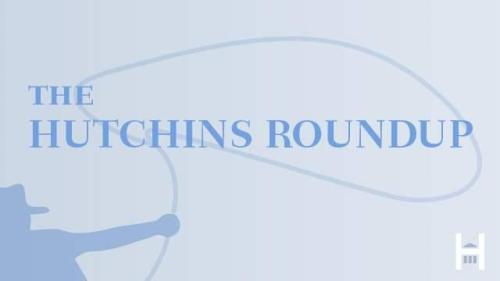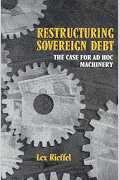Studies in this week’s Hutchins Roundup find that the Federal Reserve’s stress tests reallocate small business loan supply towards local sources of credit, wind farms receiving output subsidies have higher productivity than those receiving investment subsidies, and more.
Want to receive the Hutchins Roundup as an email? Sign up here to get it in your inbox every Thursday.
Stress tests do not reduce overall small business credit, do reallocate supply towards local sources
The Federal Reserve’s stress tests of larger banks, designed to determine if they have enough capital to withstand adverse economic developments, are a popular explanation for the slow post-crisis growth in small business loans. Using results from stress tests of 32 banks and subsidiaries between 2012 and 2016, Kristle Cortés of the University of New South Wales and co-authors find that banks that were more constrained by the stress test results raised interest rates and cut back on small business lending, particularly to risky borrowers. The reductions were pronounced in areas where the big banks didn’t have branches. But the stress tests did not reduce small business credit overall, they find, because smaller, local banks not subject to the Fed’s stress tests stepped in to fill the void. The authors conclude that stress tests reallocate small business credit supply away from large banks and toward more local sources of credit.
Output subsidies for wind energy lead to projects with higher productivity
In 2009, the federal government offered wind farm developers a choice: receive an upfront 30 percent subsidy on their investment costs (an investment subsidy), or receive a $23 subsidy for every megawatt hour of power produced during the first 10 years of operation (an output subsidy). Joseph Aldy and Todd Gerarden of Harvard and Richard Sweeney of Boston College match similar wind farm projects before and after 2009, and compare the productivity of plants claiming investment subsidies versus output subsidies. Those claiming the investment subsidy produced about 10 percent less power per unit of capacity than those claiming the output subsidy, they estimate, leading the government to pay 12 percent more per unit of output under the investment subsidy. They say that some of this difference is due to the fact that prices in electricity markets can sometimes drop below zero. Output-based subsidies encourage wind farms to supply power when prices are negative.
Well-anchored inflation expectations facilitate growth of credit-constrained industries
Central bankers often assert that well-anchored inflation expectations are beneficial for economic growth. Using panel data for 22 manufacturing industries from various countries between 1990 and 2014, Sangyup Choi, Davide Furceri, and Prakash Loungani of the International Monetary Fund examine how the response of inflation expectations to inflation surprises—a measure of inflation anchoring—affects growth across industries. They find that credit-constrained industries tend to grow faster in countries with well-anchored inflation expectations. The results are robust to specifications with various macroeconomic controls such as financial development, the size of government, and the level of inflation. The work suggests that inflation anchoring, not the level of inflation, is what matters for economic growth.
Chart of the week: Interstate migration has been declining since the 1990s

Quote of the week:
“Although experience in other countries suggests it can prove difficult to raise an underlying inflation trend that has been running below policymakers’ target for several years, stronger tailwinds may help re-anchor inflation expectations at the symmetric 2 percent objective…Recent research has highlighted the downside risks to inflation and to longer-run inflation expectations that are posed by the effective lower bound on nominal interest rates, and it suggests the importance of ensuring underlying inflation does not slip below target in today’s new normal. We also seek to sustain full employment, and we will want to be attentive to imbalances that could jeopardize this goal. If the unemployment rate continues to decline on the current trajectory, it could fall to levels that have been rarely seen over the past five decades,” says Lael Brainard, governor of the Federal Reserve.
“What do these considerations imply for the path of monetary policy? Continued gradual increases in the federal funds rate are likely to remain appropriate to ensure inflation rises sustainably to our target and to sustain full employment….In many respects, the macro environment today is the mirror image of the environment we confronted a couple of years ago. In the earlier period, strong headwinds sapped the momentum of the recovery and weighed down the path of policy. Today, with headwinds shifting to tailwinds, the reverse could hold true.”
The Brookings Institution is committed to quality, independence, and impact.
We are supported by a diverse array of funders. In line with our values and policies, each Brookings publication represents the sole views of its author(s).











Commentary
Hutchins Roundup: Stress tests and small business loans, wind energy subsidies, and more
March 8, 2018
Studies in this week’s Hutchins Roundup find that the Federal Reserve’s stress tests reallocate small business loan supply towards local sources of credit, wind farms receiving output subsidies have higher productivity than those receiving investment subsidies, and more.